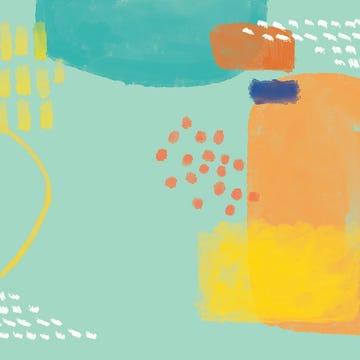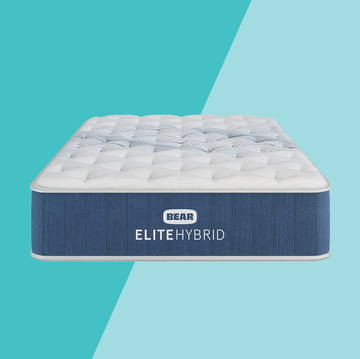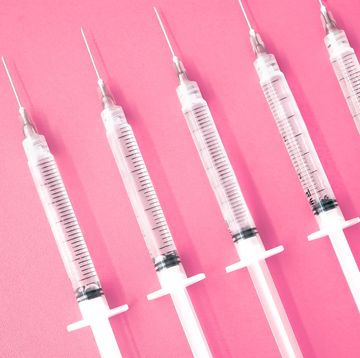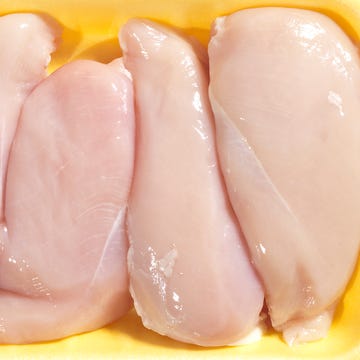Just one of the many miracles of life, an infant’s teeth actually start developing months before birth. In fact, tooth buds begin appearing by the 7th week of pregnancy. By the time the baby is born, all 20 of the primary teeth that will sprout over the next 2 1/2 years are already present and accounted for in the jawbone. Usually those first teeth start pushing 4 to 8 months after birth. Baby’s gums become swollen and tender, and the little child becomes irritable and restless. Get ready—teething has begun.
An infant can react to this new sensation of teething in a variety of ways. Some babies will experience periods of irritability and pain and some will run low-grade fevers, always lower than 100°F, says Dorota Szczepaniak, MD, FAAP. Teething infants enjoy chewing, but after the recent warning about possible toxic ingredients in plastic toys, doctors recommend natural methods to ease teething—all from ingredients readily available at home. Here is the current expert advice on how to reduce baby's teething pain.
Cool Those Teeth
A wet washcloth placed in the freezer for 30 minutes makes a handy teething aid. “It’s cold and crunchy, and infants enjoy it—just be sure to wash it after each use,” says Szczepaniak. Avoid rubber teething rings filled with liquid because they can break and expose your baby to the chemical inside, she warns. And those recent warnings about chemicals in plastic make the rubber teething rings less desirable.
Dab The Drool
Drooling often occurs around the same time as teething, but new research suggests it is not caused by the teething. “Drooling has more to do with the child starting to make more saliva and not having yet learned how to swallow it,” says Helen F. Neville, RN. Wash the overflow off frequently with a warm washcloth to prevent a rash from developing on the baby’s face. If drool causes a rash on your baby’s face, wipe gently—don’t rub—with a soft cotton cloth. “You can also smooth petroleum jelly on the baby’s chin before a nap or bedtime to protect the skin from further irritation,” says Szczepaniak.
Massage The Gums
Rub your baby’s gums with a clean finger, gently but firmly. Or gently rub the gums with a small, cool spoon, says Szczepaniak.
Listen To Grandma
Infants 6 months or older may get comfort from biting a hard teething cracker—a time-honored trick. Szczepaniak recommends using organic whole grain unsweetened biscuits with no salt added. You can also take a small slice of day-old bagel (with the crust) and let baby gnaw on it. Just make sure the chunk is big enough so it can’t be swallowed and won’t break into pieces, and it should not contain nuts, says Szczepaniak.
Opt For A Fruit Pop
Let your 6-month or older baby suck on an unsweetened fruit juice popsicle. “You can make popsicles yourself by freezing baby food fruits,” says Szczepaniak.
Gauze The Gums
If your baby hates the feel of a toothbrush, then wipe the teeth with gauze rather than a toothbrush, says Neville. When you do start brushing your infant’s little teeth, make sure you use a child’s soft toothbrush. And be gentle. Neville advises tasting the toothpaste. “For some sensitive kids, mint flavor is hot, peppery, and uncomfortable,” she says. “So some parents find that changing the toothpaste makes the child more willing to get her teeth brushed.”
Ban The Bottle
Well, not completely. But once your baby is teething, make sure your child doesn’t fall asleep with a bottle in her mouth. The milk or juice can pool in the mouth and start the process of tooth decay and plaque. But some kids really need those bottles, says Neville. “Sucking is really important to them. If your child still needs a bottle, gradually dilute the milk with water. That way the child can suck on a bottle without damaging the teeth,” she explains.
Cuddle And Coo
“The children who are more sensitive are going to be in more pain, and the kids with a higher pain tolerance are going to float right through teething,” says Neville. If your child is sensitive, he’ll need more cuddling, holding, and soothing because of the pain.
Be A Clown
Sometimes a simple distraction can help your baby forget his pain temporarily, says Szczepaniak.
Teething Remedies From The Kitchen
Instead of the typical teething ring, try giving your baby some frozen bananas in a product called Baby Safe Feeder. Designed to eliminate choking hazards for early eaters, the feeder looks similar to a pacifier with a small mesh bag (instead of a nipple) that can hold food for your baby to suck or chew. Most standard teething rings are flavorless, so just a little frozen fruit will give the baby an incentive to bite down and work those teeth through the gums.
When To Take Baby To The Doctor
It’s normal for babies to develop low-grade fever while teething. But if the temperature is 100°F or higher, it means something else is going on in your baby’s body. You should see your doctor.
Panel Of Advisors
Helen F. Neville, RN, is a specialist in inborn temperment and former instructor in stress management at Kaiser Permanente Hospital in Oakland, California. She is author of Temperment Tools and Is This A Phase? Child Development & Parent Strategies, Birth to 6 Years.
Dorota Szczepaniak, MD, FAAP, is associate director of clinical affairs at the section of general and community pediatrics, Indiana University School of Medicine, and a general pediatrician at Riley Hospital for Children in Indianapolis.












